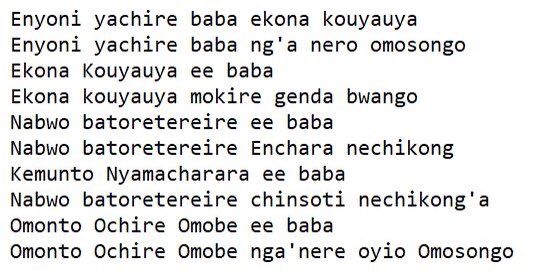
It was not clear what the “spear” was, or what it represented. However, it is widely believed that the visitors that Sakawa spoke of were Europeans who eventually colonized Kenya.
So one night he set off to plant the sticks at the identified location in the distance.
From that day on, according to Gusii lore, the location where Nyamao planted the pieces of sticks formed the boundary between those two communities.
Sakawa, who died in 1909, warned his tribesmen about the coming of some strange people who would put up structures that looked like mushrooms.
In 1905, Sir Donald Stewart was Commissioner of East Africa Protectorate.
The Abagusii from Western Kitutu offered the greatest resistance.
She also blessed him and anointed him to track down and kill “Nyarigoti”.














